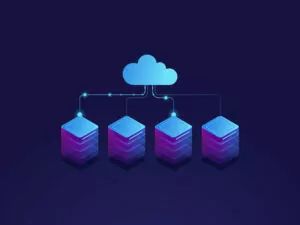Table of Contents
ToggleWhat is ADM?
Application dependency mapping provides you with an accurate, thorough map of your entire IT ecosystem from end to end. At least, that’s what it should do when it’s done right.
In some cases, your technology may have blind spots, for example if it doesn’t support legacy technology or future-focused systems. In other cases, it may be less accurate than completely, with scanning based on snapshots of traffic rather than real-time communications and flows. You might also find that it impacts performance, by using agents or credentials instead of wire data and network traffic analysis.
Once you’ve jumped those hurdles, and found a solution that checks all the boxes for accurate, real-time and comprehensive scanning, the hard work is pretty much over. At this point, you can start thinking about the benefits of your new technology, and how to use it to its full potential. That’s where we can help. Here are four of the top use cases for a smart application dependency mapping tool, try not to start them all at once!
Business Mapping
Don’t underestimate how valuable it can be to have a deep understanding of all of your servers and applications, especially if it comes with insight into dependencies and communications. The best tools will offer the ability to define subnets, VPCs and Security Groups on AWS, too.
Whether you’re looking to see exactly what you have inside your four walls, ensure that no architecture or systems are flying beneath your business radar, or hoping to retire or consolidate assets, a full business map gives you confidence that you understand the consequences of any business decision that you’re making, ahead of time.
Change Management
From small changes like retiring systems, to other change management projects like huge migrations and cloud adoption, today’s networks and data centers are not made for taking leaps in the dark. There is too much at stake, and environments are too complex and connected. Once you’ve seen where an asset stands in relation to the rest of your ecosystem, you can make smart and informed decisions about business-critical services.
Take cloud migration for example. The most successful projects are implemented with a phased approach, first moving over low risk assets, before turning to larger or more connected applications and systems. How can you even know what belongs in which category without an accurate map of your whole network? Your map can be the foundation you need to create a plan that works for your business, with absolutely no surprises.
Root Cause Analysis
How much time do your IT staff or other stakeholders spend trying to work out what went wrong, and where? Reducing the time to resolution is one of the most important metrics that your business should be working on, as poor performance or system failure quickly turns into customer frustration and churn.
In a comprehensive business map that shows application dependencies, you can see at a glance any problems plaguing your organization, from the reason why you’re experiencing delays and bottlenecks, to any failed connections or service issues. Not only can you identify what’s wrong, but it should also be intuitive how to mitigate the problem and go back to business as usual.
Proactive Incident Response
The problem with planning for incident response is that you can’t really imagine what the situation would be like in reality, which leads to gaps and blind spots. Think again. With an accurate map, you will be able to monitor your applications and systems to see how they will be impacted should an attacker get access your network, and you can create drills and simulations and then map the results.
When nothing is hidden, it’s easy to create smart security policy ahead of time, such as setting micro-perimeters using microsegmentation, or moving sensitive data to a more secure location. By identifying the at-risk areas of your network, you are best placed to create disaster recovery and backup solutions that are fit for purpose. Even in the worst case scenario of a data breach or attack, you have granular insight into your entire system, and have prepared ahead of time to limit the extent of an incident. You can use this evidence to limit the impact in terms of compliance or internal governance.
The Options are Endless
While these are some of the most popular use cases for application discovery and application dependency mapping (ADDM), this is just the tip of the iceberg. Want to hear more about the business benefits and value of Faddom? Give us a call and we can schedule a full demo.





